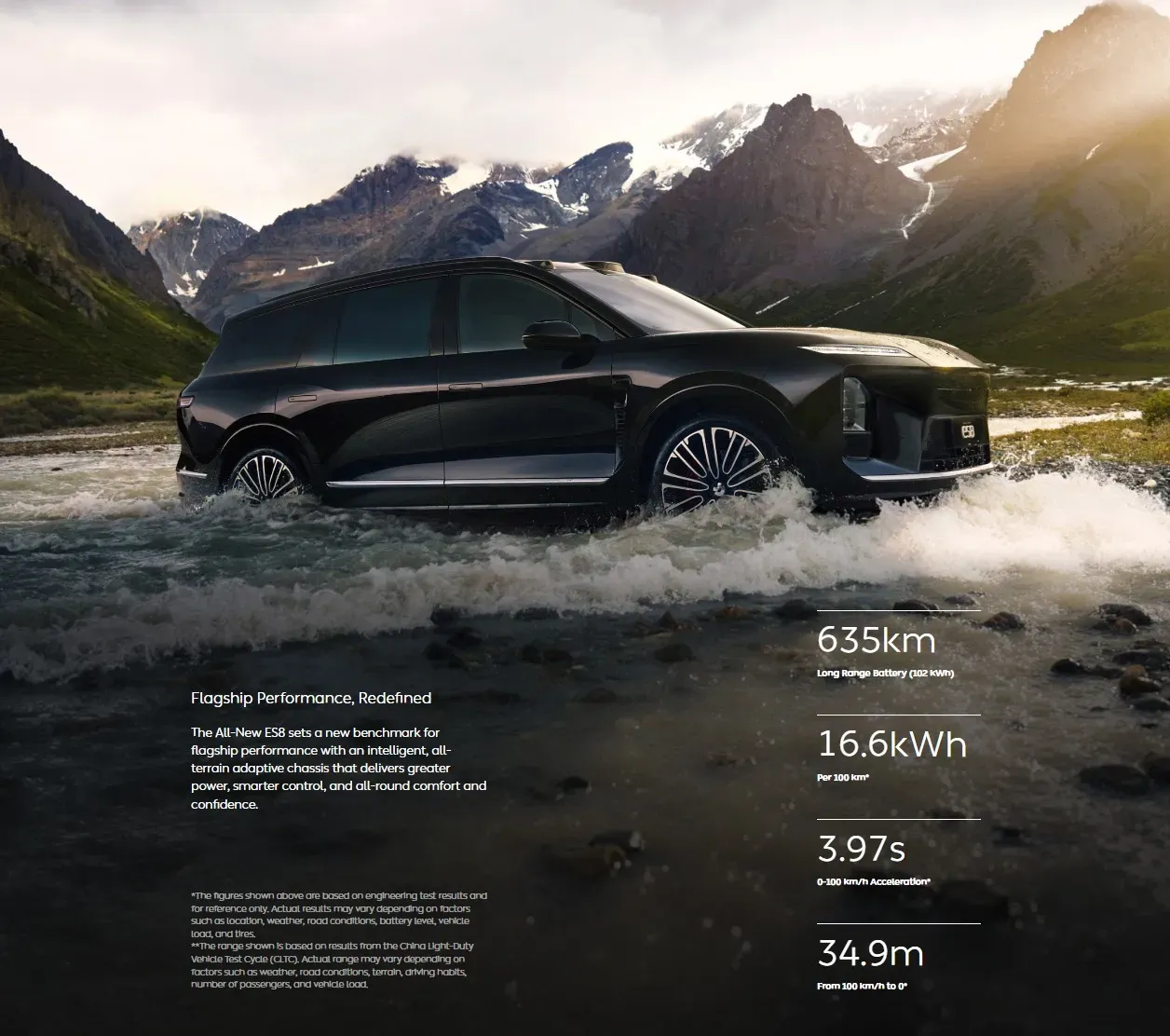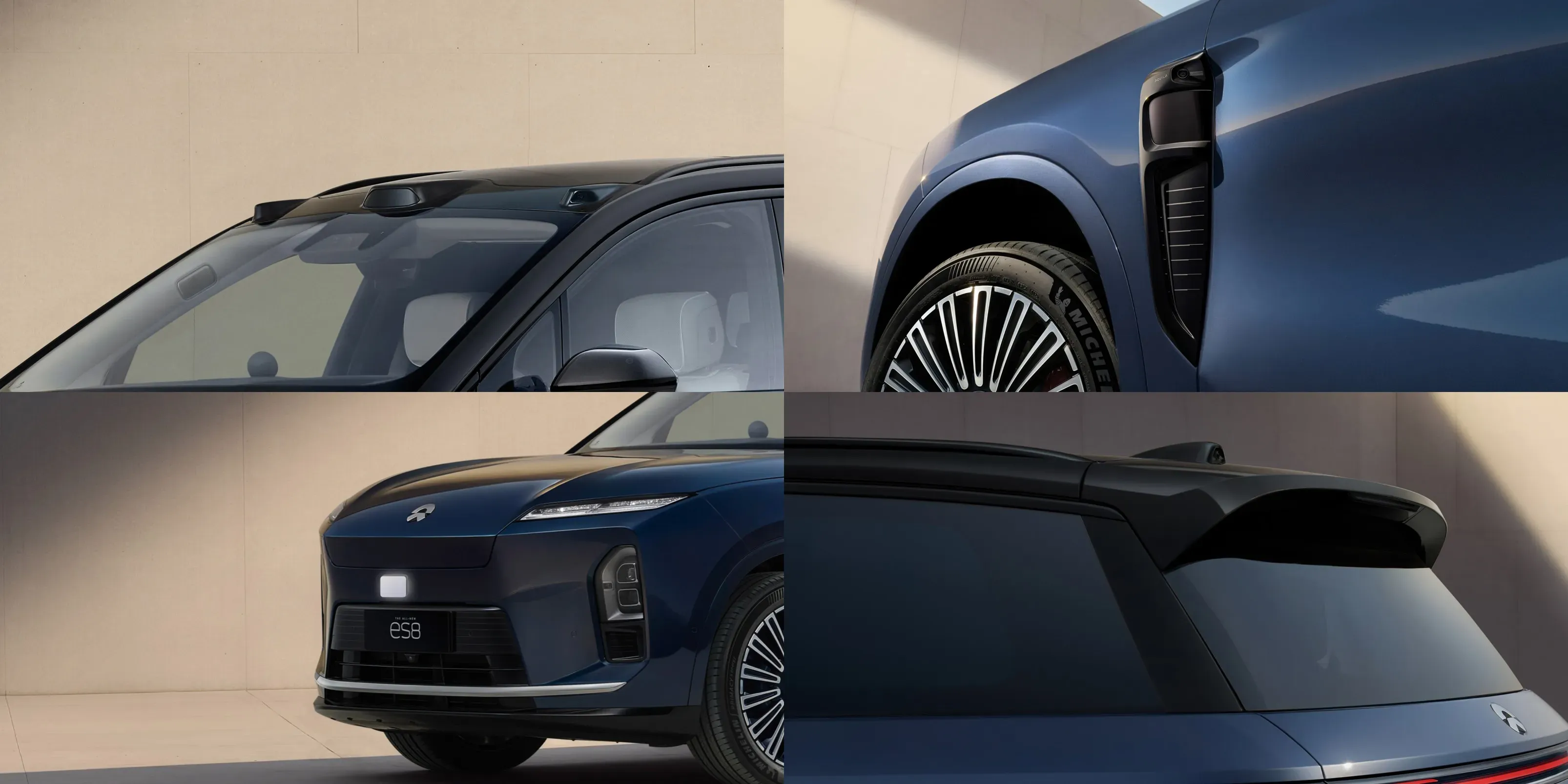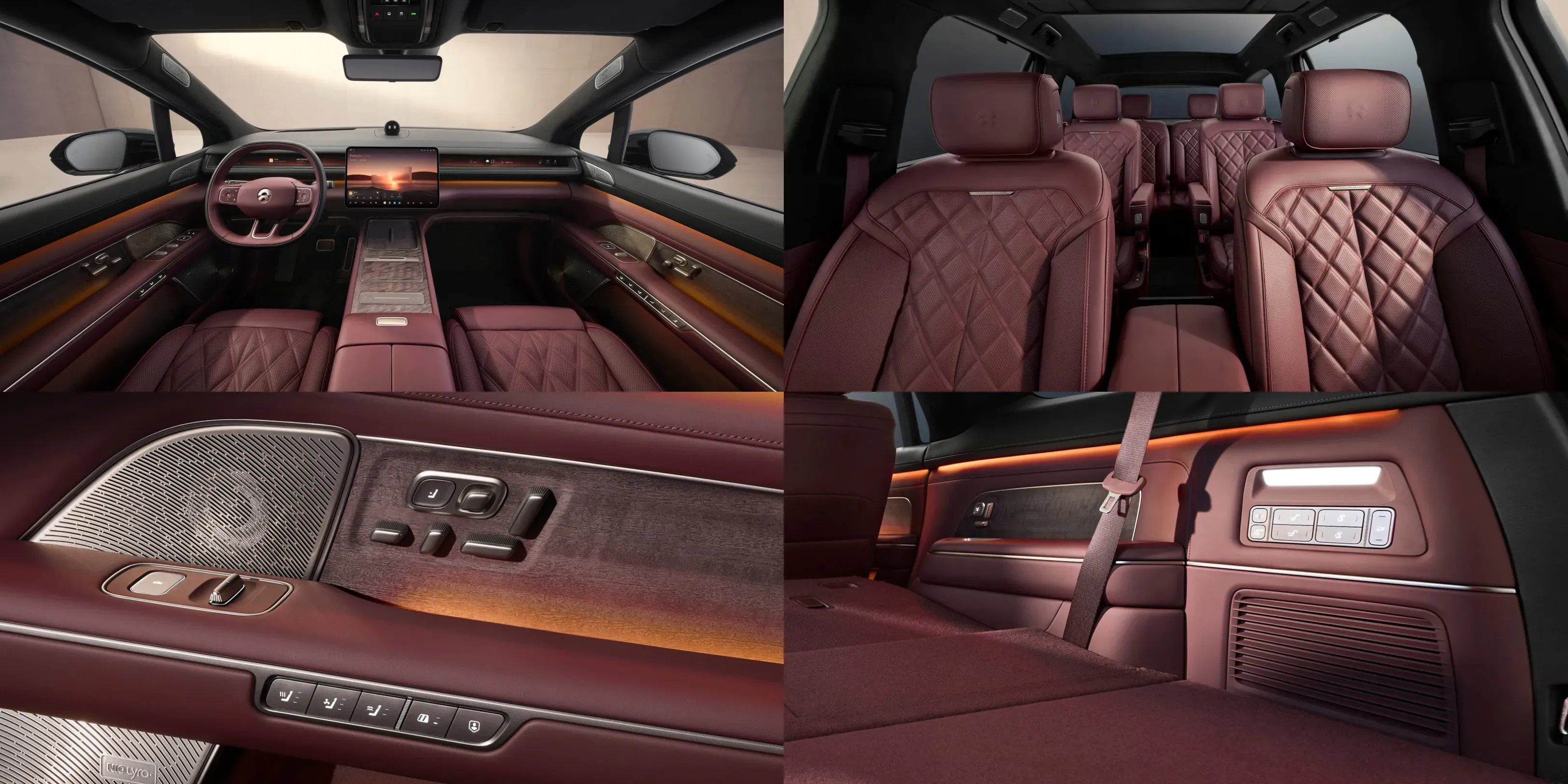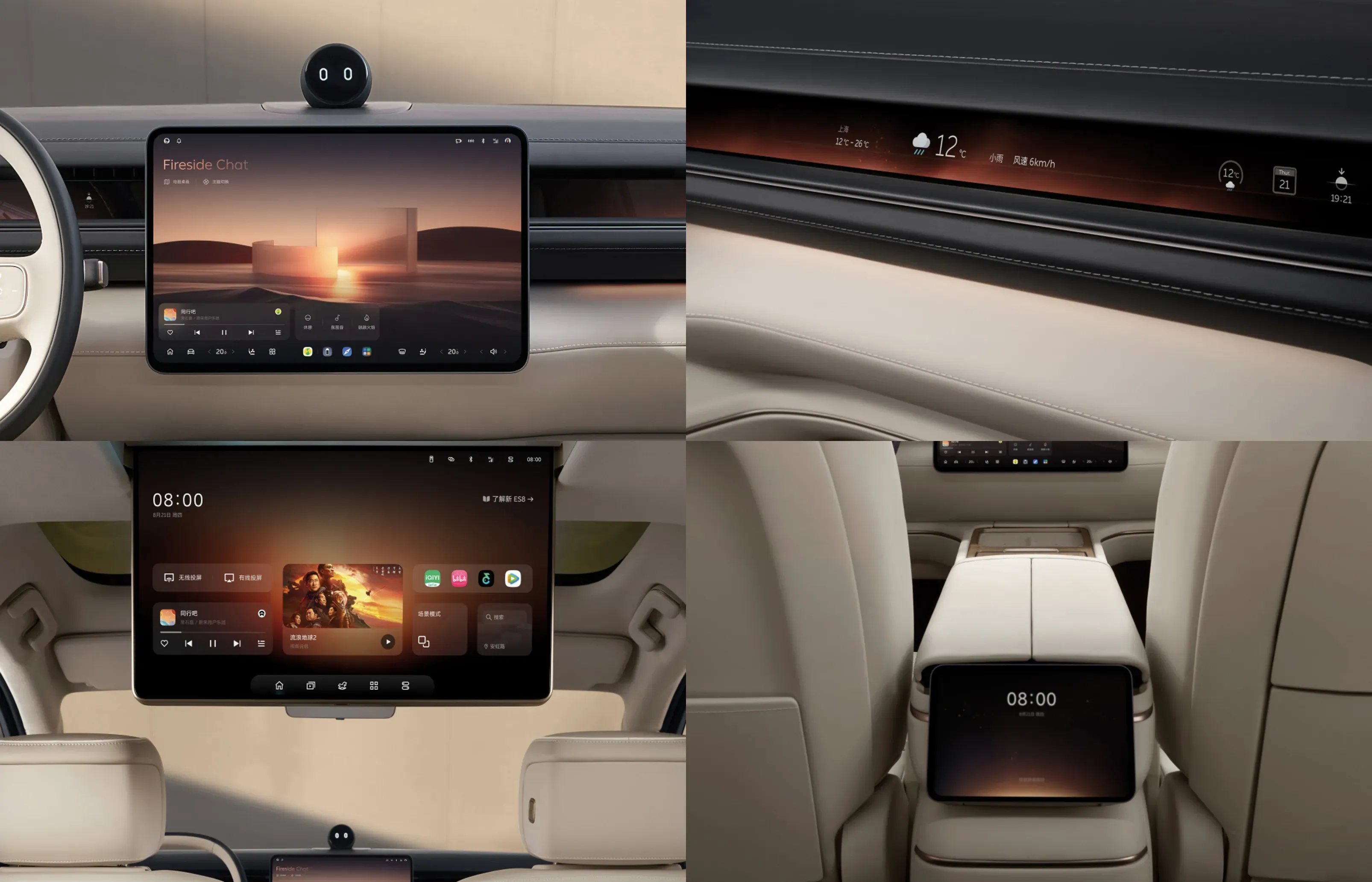Breaking: NIO's 3rd gen ES8 will start at 308,800 yuan ($43,000) with BaaS
globalchinaev
• Aug 21 • 8 min read
NIO (NYSE:NIO) formally unveiled the third‑generation ES8 on August 21 2025, revealing pricing and specifications for the long‑anticipated flagship SUV.
The event took place during in Hefei, where CEO William Li announced that the new ES8—built on the NT3.0 architecture—will be available in three trims with a starting price of 416,800 yuan (c. $58,100) or as low as 308,800 yuan (c. $43,000) with Battery-as-a-Service (BaaS).
Advertisement – Continue scrolling for more
NIO’s ES8 pre‑order requires a 5,000 yuan (c. $700) refundable deposit. First deliveries of the NT3.0 ES8 are scheduled to begin in late September 2025, with early adopters receiving priority production slots.
The company is offering incentives such as five‑year zero‑interest financing, free paint upgrades and complimentary battery‑swap subscriptions for orders placed before October 31.

Source: NIO
Out of the box, the all-new 3rd gen ES8 will come standard with a 102 kWh battery as standard on all trims, enabling 635 km of CLTC range and energy consumption of 16.6 kWh per 100 km. The large SUV is no slouch, with acceleration from 0-100 km/h in 3.97 seconds and breaking distance of 34.9m from 100km/h to 0.
NIO’s flagship SUV is built on its 900V architecture with triple LiDAR and a 4D imaging radar, making it one of the most advanced vehicles in NIO’s line‑up and the first NIO model to transition from its NT2.0 to NT3.0 platform.
Advertisement – Continue scrolling for more
NIO continues its iconic watchtower layout with a roof-mounted LiDAR and two side-cameras, introduced through the NT2.0 platform models. They are powered by the company’s inhouse developed NX6031 chip to achieve detection range of 500 meters,
It’s driving system also features dual wide-FOV side LiDARs with a field of view of 120° horizontally and 70° vertically, reaching up to 150 meters of side detection.

Source: NIO
The ES8 also uses a high-precision 4D imaging radar to detect objects as far as 370 meters, particularly enhancing sensing capabilities under complex conditions and adverse weathers.
Finally, the SUV is equipped with seven 8 MP cameras, enabling a 360° high-resolution surround view, and paired with the Image Signal Processor (ISP) of the NX9031 chip.
Advertisement – Continue scrolling for more
This year, NIO ET9 was debuted on the NT3.0 platform while the NIO ES6/EC6/ET5/ET5T received incremental upgrades to the company’s transitional NT2.5 platform.
This year’s ES8 can be considered a major leap in terms of configuration while coming at a much lower price.
The NT2.0 model’s pricing ranged from 498,000 yuan to 598,000 yuan, depending on battery size and configuration, and used a 400‑V platform with dual 240‑kW motors producing 480 kW.
Advertisement – Continue scrolling for more
The new NT3.0 version retains the dual‑motor layout but increases combined power to 520 kW (180 kW front induction motor and 340 kW rear permanent‑magnet motor) and torque to around 1,130 N·m.
NIO upgrades the battery to a 102 kWh pack and adopts a 900‑V 5C charging architecture capable of adding 250 km (c. 155 miles) of range in five minutes or performing a battery swap in three minutes.
CLTC range is quoted at 635 km (c. 395 miles), up from 465 km and 605 km for the 75 kWh and 100 kWh NT2.0 ES8, respectively.

Source: NIO
The three trims—commonly referred to as 6-Seat Executive, 7-Seat Executive and 6-Seat Executive Signature—differ in standard equipment.
The 6-Seat Executive starts at 416,800 yuan ($58,100) or 308,800 yuan with BaaS offers NIO’s Aquila 2.0 sensor suite with three LiDAR units, 8‑megapixel cameras and 4D imaging radar. It includes a 27‑inch head‑up display, the Nomi 4.0 voice assistant and a Skyline digital strip spanning the dashboard.
The 6-Seat Executive Signature model is priced at 456,800 yuan (c. $63,600) or 348,800 yuan with BaaS adds adaptive air suspension with active anti‑roll.
All trims share the six‑seat layout (2+2+2) with individual second‑row chairs that recline and massage, third‑row seats with power adjustment and a refrigerated console between them.
Advertisement – Continue scrolling for more
The front row features a Zero-Gravity Lounge seat for the front passenger, enabling 20 adjustments with a 325 leg support and can be fully stretched out to a zero-gravity position.
The two second‑row Zero-Gravity Lounge seats come with leg supports, power-adjustable armrests, and footrest for the right seat.
The third row continues the theme with power adjustable cushions that can slide back and forth with a 130 mm adjustment range and backrests that can recline up to 130°.

Source: NIO
The ES8 offers a Boeing-like experience with smart dimmable glass with three levels of adjustment powered by next-gen EC technology.
The second-row gives access to an 8.8L fridge with temperature ranging from -2°C to 55°C and 6 smart modes with low power consumption and long standby,
The cabin uses a smart five-zone climate control system that allows for independent control. Parked under the sun, the ES8 will automatically prevent overheating by maintaining cabin temperature below 40 °C.

Source: NIO
Compared with the NT2.0 ES8, the new model is larger and more imposing: length grows to 5,280 mm (up from 5,099 mm), width to 2,010 mm (from 1,989 mm) and height to 1,800 mm (from 1,750 mm) with a 100 mm suspension travel.
Wheelbase stretches 60 mm to 3,130 mm, making room for the second‑row lounge seats and improved third‑row legroom.
Advertisement – Continue scrolling for more
The ES8 features front and rear five-link suspensions for superior shock absorption and dual-chamber air suspension with up to 100 mm travel and 50 mm adjustment in just 7 seconds.
NIO also implemented its lane-level 4D smart suspension, which leverages multi-sensor fusion to predict oncoming road bumps and adjust suspension height and damping ahead of the road shock for an improved ride experience.

Source: NIO
The front of the car adopts a sharper fascia with a closed grille flanked by split LED daytime running lights that differ from previous NIO models. NIO calls it the CRYSTAL Double-Dash DRL, featuring 333 precisely cut facets that gleams like crystals.
The side mirrors integrate new smart driving light with a multi-layer optical path and a 6mm 30 LEDs ultra-thin blue light strip to indicate when ADAS is activated.

Source: NIO
At the rear spans a full‑width Fletching Taillight with 600 LEDs that forms a light-bar with a recognizable arrow-feather shape.
NIO says the NT3.0 ES8’s computing hardware is far superior, equipped with an in‑house “Shenji NX9031” compute unit delivering approximately 1,000 TOPS of processing power to run NIO’s Banyan OS, enabling advanced features such as map‑free Navigate on Pilot (NOP 3.0) and end‑to‑end autonomous parking.
Advertisement – Continue scrolling for more
NIO enveloped the entire cabin and trunk with 52 m² of soft‑touch materials and offers a choice of four interior themes, including a velvet leather option.

Source: NIO
The triple LiDAR and 4D radar system—combined with high‑definition cameras—provide a 360‑degree sensing range of up to 1,000 m, allowing the ES8 to identify obstacles and road conditions more accurately than its predecessors. Over‑the‑air updates will continuously improve the driver‑assistance suite.

Source: NIO
The interior cabin features a 15.6 inch OLED infotainment display, 38-inch AR HUD with 20,000-nit peak brightness, an ultra-slim Skyline adaptive display that runs through the dashboard, 8-inch OLED rear control panel, and flip-down 21.4-inch overhead mini-LED display for cinematic experiences at the rear.
An ambient light strip runs across the entire cabin with 16-million-color gamut coupled with 27 grouped speakers powered by Dolby Atmos and Dirac Pro spatial acoustic algorithms to creates an immersive soundstage.

Source: NIO
In a single tap, users can active the Theater Mode, which will adjust seating angle to an optimal viewing position with anbient lighting synchronizing with the on-screen content. Sound system and privacy glass will also intelligently adapt to create an immersive cinema experience.
Second‑row seats recline up to 60° and incorporate heating, ventilation and massage functions with adjustable leg rests. The third row can fold flat to create up to 1,000 liters of cargo space.

The ES8 also features an all-scenario Intelligent Light Carpet projecting adaptive light onto the road ahead that fully alights with the lane even through sharp curves and can space two lanes to illuminate the current and target lanes during turns or lane changes.
Moreover, the light carpet can projects warnings on the ground when the system detects pedestrians, cyclists, or obstacles.
Advertisement – Continue scrolling for more
The NT3.0 ES8 enters a fiercely competitive market for premium large SUVs. NIO positions it against the all‑electric Li Auto i8 (NASDAQ:LI), which offers a 90 kWh battery, 700 km CLTC range and 5C charging.
It also competes with Li Auto’s extended‑range L8 and L9, which pair gasoline range extenders with large battery packs to deliver more than 1,300 km comprehensive CLTC range.
Huawei‑backed AITO’s M9 and M8 range‑extended SUVs are firmly the best-selling large SUVs in China at the moment, representing NIO’s biggest competitor alongside Li Auto’s L8/L9 and i8.
Advertisement – Continue scrolling for more
NIO also points to the Onvo L90 (NIO’s mass‑market brand) as a complementary product: built on the same 900‑V platform with a 605 km range and priced at around 265,800 yuan, the L90 targets mainstream buyers.
By starting the ES8 at 416,800 yuan, NIO creates a clear market segmentation to separate Onvo’s affordability from NIO’s premium positioning.